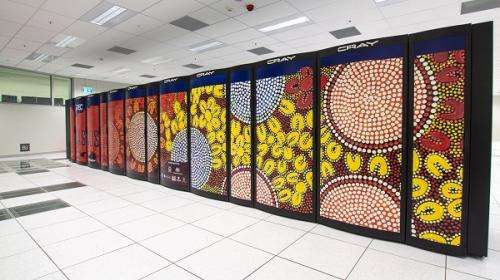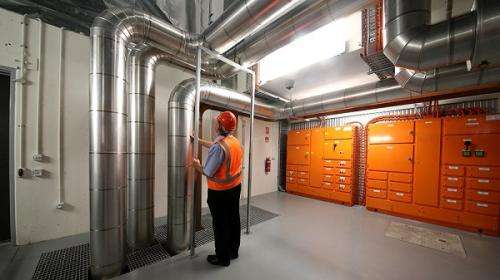Using groundwater to cool a supercomputer

More than 2.8 megalitres of water has been saved in just under a year using groundwater to cool the Pawsey Centre supercomputer in Perth.
To make that happen, scientists have undertaken stringent tests to ensure that returning heated water to the Mullalloo aquifer has no adverse effects.
CSIRO Land and Water senior principal research scientist Grant Douglas says the CSIRO groundwater cooling system has been pumping water from a depth of 100 metres below the Australia Resources Research Centre (ARRC) in Kensington's Technology Park since November 2013.
"A great deal of planning, engineering and testing has been undertaken to make sure everything works," Dr Douglas says.
"Without this, the supercomputer would have been cooled using cooling towers, and that water— essentially from a tap—would have been lost to the atmosphere."
CSIRO estimates using this system to cool the supercomputer will save approximately 14.5 million litres of water in the first two years of operation, which is equivalent to running a tap constantly for three and a half years.
The groundwater cooling system is pumping water from one point in the aquifer, running it into the Pawsey Centre where it exchanges the heat in a closed loop system, and then injecting it back into the aquifer at about 8-9oC higher than before.
Regular monthly sampling of various bores is part of a long-term monitoring and assessment plan.

They are conducting geochemical analysis of the aquifer sediment, and microbiological, organic contaminant and major ion surveys of the groundwater despite it being in a closed system and in stainless steel pipes where no chemical or biological reactions can occur.
"Nothing is lost along the way and no significant change in the aquifer's water quality occurs," Dr Douglas says.
This geothermal project is different to many others that drill deep into the earth at over 1km, where water starts to reach 40-50oC and water is pumped up and utilised for its heat to warm pipes or under floor.
"Here we are only going down to about 100m where it is a constant 21-22oC all year around," Dr Douglas says.
"It's really the complete reverse of that—we use cool water and add heat back into it harvested from the supercomputer and inject that back into the aquifer."
Dr Douglas says they want to investigate ways to optimise the system's performance and learn how it can be best adopted to potentially replace cooling towers major facilities, including hospitals and industrial operations.
More information: G.B. Douglas, M.G. Trefry, J.T. Wylie, P.G. Wilkes, G.J. Puzon, A.H. Kaksonen, "Potential biogeochemical impacts of heat rejection in the Mullaloo aquifer," Western Australia, Geothermics, Volume 53, January 2015, Pages 429-445, ISSN 0375-6505, dx.doi.org/10.1016/j.geothermics.2014.08.004.
Provided by Science Network WA




















